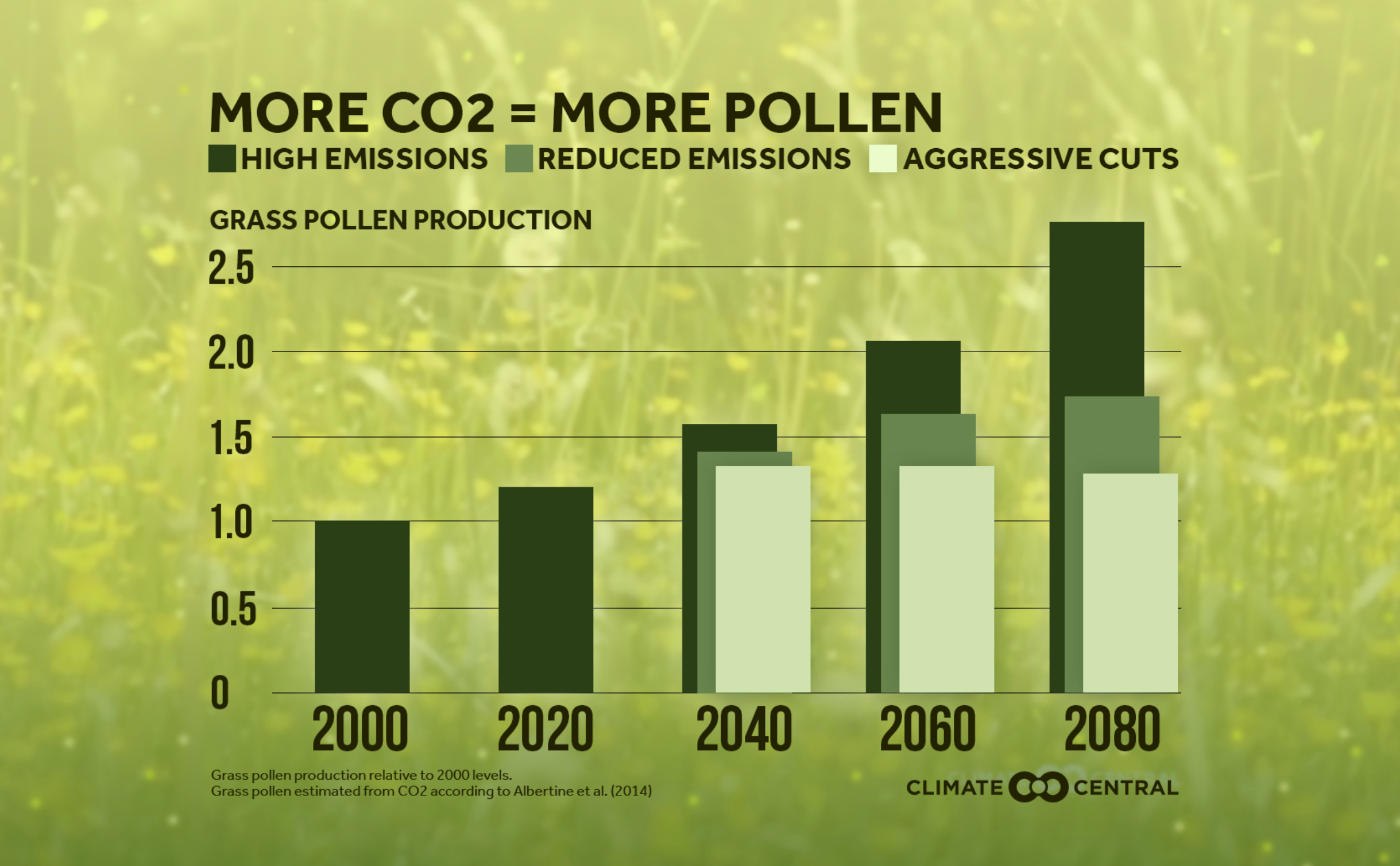Why seasonal allergies are getting worse every year
Pollen increased by 21 per cent between 1990 and 2018, with the largest increases in Texas and the Midwest


If you’re among the estimated 36 million people in the United States who live with seasonal allergies, this won’t come as welcome news.
Pollen season now starts 20 days earlier and is filled with 21 per cent more pollen than in 1990, according to recent study.
Researchers discovered that the climate crisis is playing a significant part in that longer season, and a partial role in the mounting pollen count.
“The strong link between warmer weather and pollen seasons provides a crystal-clear example of how climate change is already affecting peoples' health across the US,” said Professor William Anderegg after his study was published in the academic journal, Proceedings of the National Academy of Sciences, last spring.

Longer allergy seasons and higher pollen counts exacerbate conditions like rhinitis, conjunctivitis and asthma. Those who are most vulnerable include children, the elderly and people with pre-existing conditions.
Additionally, higher levels of greenhouse gas emissions can worsen the symptoms of those suffering from asthma and lung disease.
The burden of a longer allergy season and higher pollen counts will put the greatest burden on vulnerable populations, including lower-income and minority communities, the non-profit Climate Central reports.
Other research has found a link between increases in temperature and carbon dioxide (CO2) in the atmosphere, and how much pollen individual plant species are producing.
However the 2021 study was the first time that pollen trends and the impact of climate change were analysed on a continental scale.
The researchers, from the University of Utah’s School of Biological Sciences, gathered data for 1990-2018 at 60 pollen count stations across the US and Canada. The stations, maintained by the National Allergy Bureau, collate information on pollen and mold levels.
Overall, pollen increased by 21 per cent over the 28-year study period, with the largest increases in Texas and the Midwest. Tree pollen increased by greater amounts than in smaller plants.
Pollen season now begins nearly three weeks earlier than in the early 1990s. Scientists believe that global heating is impacting plants' phenology – the internal clock which controls lifecycle – to produce pollen earlier in the year.
To establish a link between the pollen increases and the climate crisis, researchers analysed the trends with nearly two dozen climate models.
They found that climate change alone accounted for about half of the increase in the length of pollen season. The study periods were divided into two – 1990-2003 and 2003-2018. In the latter period, researchers found that the climate crisis is having an increasing impact on pollen counts.
This article has been updated. It was first published in February 2021
Join our commenting forum
Join thought-provoking conversations, follow other Independent readers and see their replies
Comments
Bookmark popover
Removed from bookmarks